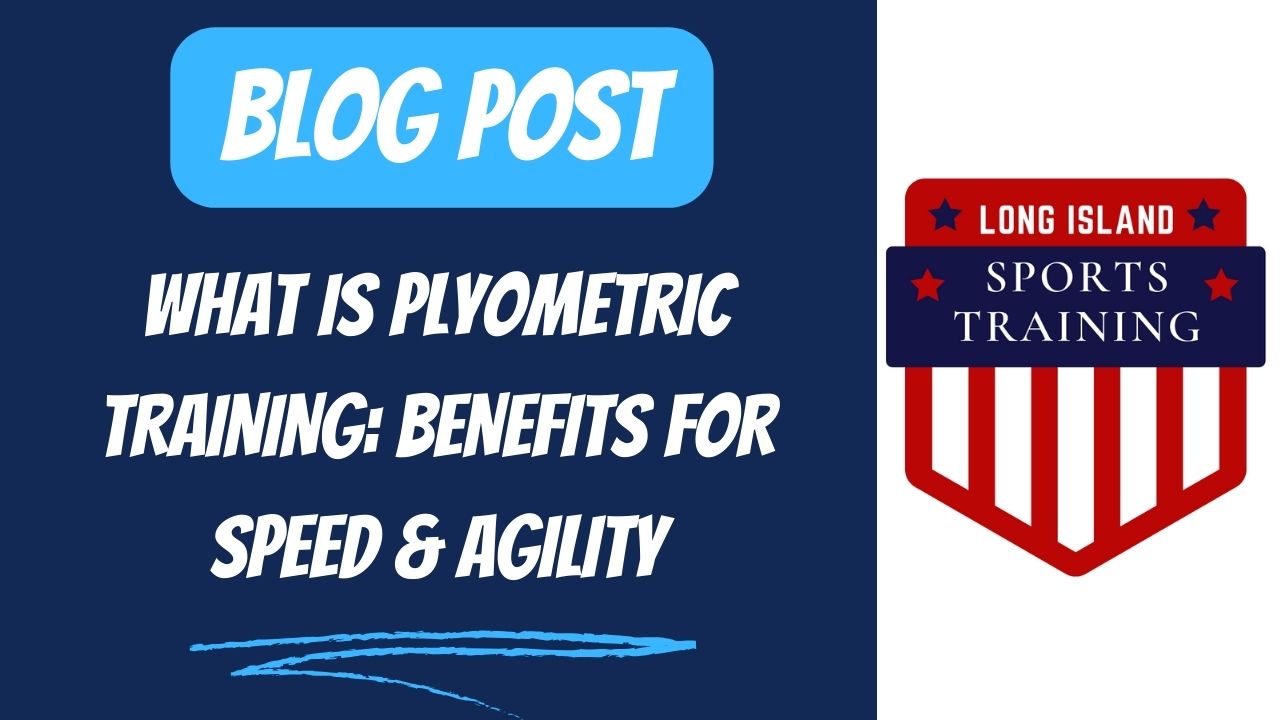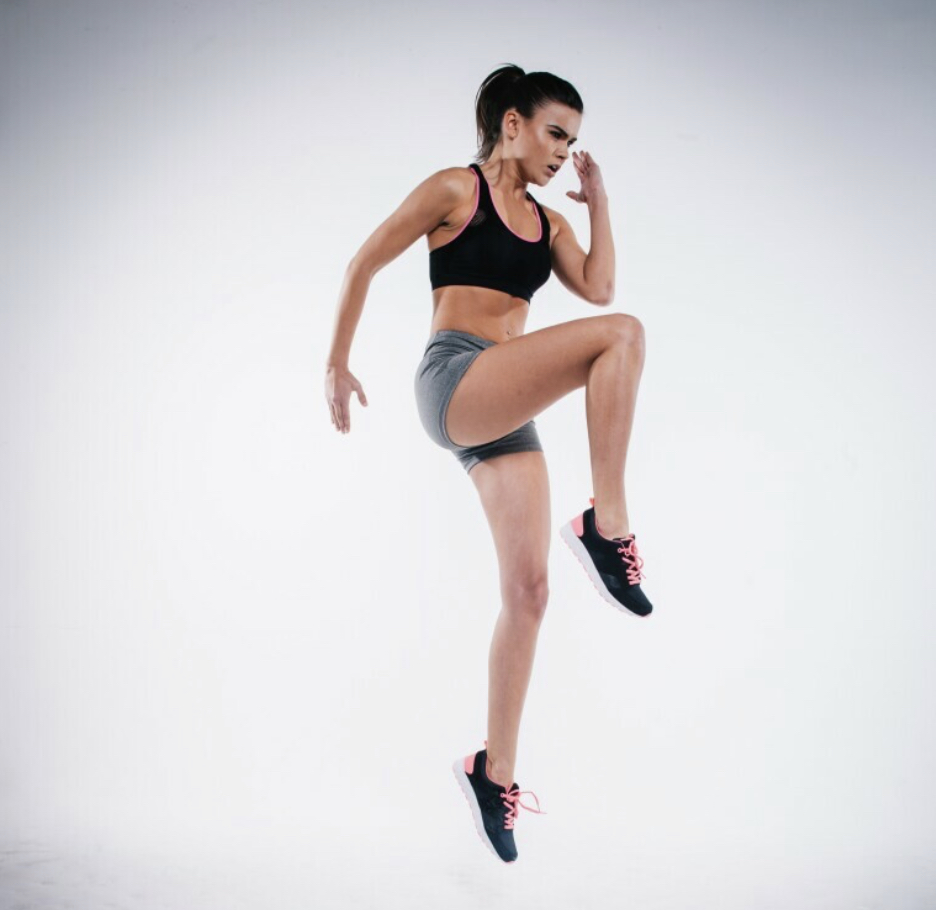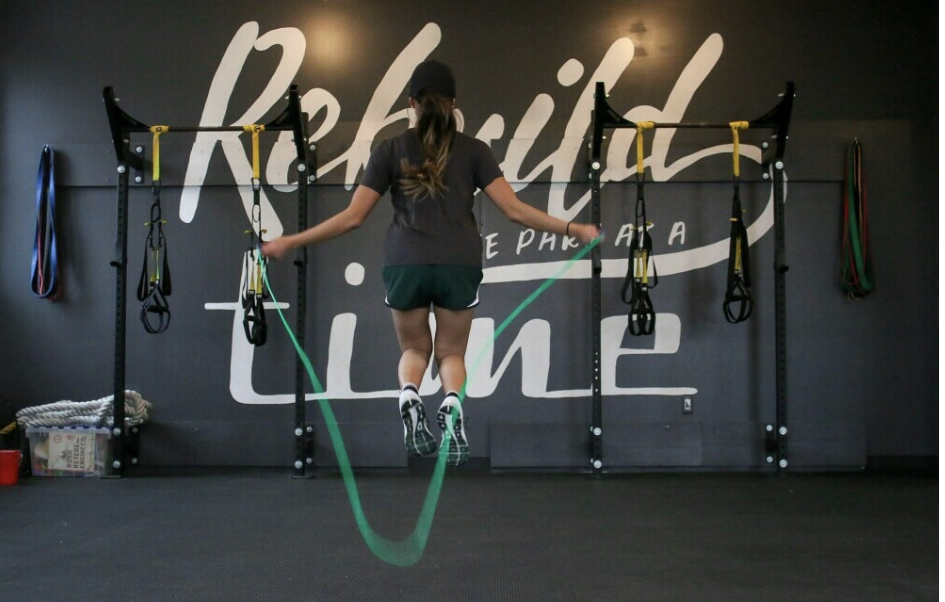What is Plyometric Training: Benefits for Speed & Agility
 What is Plyometric Training: Benefits for Speed & Agility
What is Plyometric Training: Benefits for Speed & Agility
What is plyometric training? Plyometric training, often referred to as “plyometrics” or “jump training,” is a form of exercise that focuses on quick, explosive movements designed to improve strength, power, and speed. The primary principle behind plyometrics is the utilization of the stretch-shortening cycle of muscles. This cycle involves a rapid lengthening (eccentric phase) followed immediately by a quick shortening (concentric phase) of the muscle.
In this exploration of plyometric training, we embark on a journey to understand its fundamentals and delve into the multitude of benefits it offers. From enhancing muscle power for lightning-fast sprints to refining coordination for agile maneuvers, plyometrics is a game-changer in the world of sports and fitness.
Join us as we unravel “what is plyometric training”, dissecting its impact on speed and agility and discovering how it has become an indispensable tool for athletes striving to push their limits. Whether you’re a seasoned athlete or a fitness enthusiast seeking to enhance your athleticism, this journey into the realm of plyometrics is sure to spark your curiosity and inspire you to take your training to new heights.
What Is The Plyometric Training Impact On Quick Twitch Muscles

Plyometric training is particularly effective at targeting and enhancing the function of fast-twitch muscle fibers. These quick twitch muscle fibers, also known as Type II fibers, are responsible for explosive and powerful movements.
Here are the benefits of plyometric training specifically on quick-twitch muscles:
- Increased Explosive Power: Plyometrics involves rapid contraction and extension of muscles, specifically training the fast-twitch fibers to generate maximum force in minimal time. This translates to increased explosive power, crucial for activities like sprinting, jumping, and quick changes of direction.
- Improved Rate of Force Development (RFD): Plyometric exercises enhance the rate at which force is generated during muscle contractions. This is essential for quick and dynamic movements, contributing to faster reaction times and overall athletic performance.
- Enhanced Jumping Ability: Plyometric training is known for its impact on vertical jump height. By targeting fast-twitch fibers, individuals can improve their ability to explode off the ground, reaching higher vertical jumps and improving performance in sports like basketball or volleyball.
- Optimized Speed and Agility: Quick-twitch muscles play a crucial role in speed and agility. Plyometrics conditions these muscles to contract rapidly and efficiently, allowing athletes to accelerate, decelerate, and change direction with greater speed and precision.
- Sports-Specific Performance: Many sports require rapid bursts of power and speed. Plyometric training helps mimic these demands, making it a valuable tool for athletes in sports such as football, soccer, and track and field.
- Neuromuscular Coordination: Plyometrics enhances the communication between the nervous system and muscles. This improved neuromuscular coordination is vital for quick, precise movements, reducing the time it takes for the brain to signal the muscles to contract.
- Reduction of Ground Contact Time: Fast-twitch fibers contribute to minimizing the time an athlete spends on the ground during activities like running or jumping. Plyometric training conditions the muscles to shorten ground contact time, leading to more efficient and quicker movements.
- Injury Prevention: Strengthening fast-twitch muscles and improving coordination can contribute to injury prevention. Plyometric training helps reinforce the joints and connective tissues, reducing the risk of injuries during explosive movements.
It’s important to note that while plyometric training can be highly beneficial, it should be approached with caution, especially for beginners. Proper form, progression and adequate rest are essential components to ensure the safety and effectiveness of plyometric exercises targeting fast-twitch muscles.
What Are Quick Twitch Muscles?
Quick-twitch muscles, also known as Type II muscle fibers, are one of the two main types of skeletal muscle fibers in the human body. The other type is slow-twitch muscles or Type I muscle fibers. These muscle fibers differ in their contraction speed, force production, and energy system utilization.
Here are key characteristics of quick-twitch muscles:
- Contraction Speed: Quick-twitch muscles contract rapidly, making them well-suited for activities that require explosive and powerful movements.
- Force Production: These muscle fibers generate a high amount of force in a short amount of time. They are responsible for movements requiring strength and power, such as lifting heavy weights or performing dynamic jumps.
- Energy System: Quick-twitch fibers primarily rely on anaerobic metabolism, which means they don’t require oxygen for short bursts of intense activity. This makes them well-suited for high-intensity, short-duration efforts.
- Fatigue Resistance: Quick-twitch muscles tend to fatigue more quickly than slow-twitch muscles. While they are efficient for brief bursts of power, they may not sustain prolonged efforts as effectively as slow-twitch muscles.
- Recruitment during High-Intensity Activities: These fibers are recruited during activities that demand rapid and forceful contractions, such as sprinting, jumping, and weightlifting.
- Color and Appearance: Quick-twitch muscles often appear whiter than slow-twitch muscles due to differences in blood supply and myoglobin content. Myoglobin is a protein that stores oxygen in muscle cells.
- Training Response: Training activities that focus on explosive movements and high-intensity exercises, like plyometrics and strength training, target and develop quick-twitch muscle fibers.
Understanding the distinction between quick-twitch and slow-twitch muscles is essential in tailoring training programs to specific athletic or fitness goals. While quick-twitch muscles excel in activities requiring power and speed, slow-twitch muscles are better suited for endurance activities due to their resistance to fatigue and reliance on aerobic metabolism.
Both types of muscle fibers work together to facilitate a wide range of movements and activities in the body.
In What Ways Is Plyometric Training Beneficial To Increasing Speed
Beyond the explosive power and refined neuromuscular coordination, plyometric training contributes additional advantages specifically tailored to propel athletes to higher speeds:
Optimized Stride Mechanics:
Plyometrics, with its focus on dynamic movements, aids in optimizing stride length and frequency. Athletes find that the improved mechanics translate directly to faster and more efficient running or sprinting.
Quicker Acceleration:
The enhanced force generation from plyometric exercises directly influences an athlete’s ability to accelerate rapidly. This becomes a game-changer in sports where quick bursts of speed are essential for success.
Improved Running Economy:
Plyometric training has been associated with improvements in running economy, meaning athletes can cover more distance with less effort. This efficiency is paramount in sustained high-speed endeavors.
Enhanced Reactive Speed:
Plyometrics sharpens reactive speed, the ability to respond swiftly to external stimuli. This attribute is invaluable in sports where quick decision-making and rapid changes in speed are pivotal.
Reduced Ground Contact Time:
The emphasis on minimizing ground contact time in plyometric exercises directly translates to reduced time spent on the ground during running or sprinting. This reduction contributes significantly to faster strides and quicker overall speed.
Increased Maximal Speed:
Plyometric training, when strategically integrated into a comprehensive speed-focused regimen, has the potential to elevate an athlete’s maximal speed capabilities. This can be particularly beneficial in sports where reaching peak velocity is a key determinant of success.
Adaptability to Variable Speeds:
The varied and dynamic nature of plyometric exercises fosters adaptability. Athletes trained in plyometrics often showcase a heightened ability to transition seamlessly between different speeds, responding adeptly to the demands of their sport.
As athletes incorporate plyometric training, it becomes clear that the benefits extend beyond agility, embracing speed as a fundamental aspect of the transformative process. Plyometrics becomes not just a means to achieve explosive power and agility but a gateway to a swifter and more dynamic athletic performance.
What Is The Effect Of Plyometric Training On Agility
Beyond speed, plyometrics equips athletes with a repertoire of skills that refine agility, fostering the nimbleness and responsiveness essential in navigating the intricate demands of various sports.
Sharper Change of Direction:
Plyometric training hones the ability to execute rapid changes of direction, a hallmark of agility. Athletes find that the enhanced neuromuscular coordination enables them to pivot swiftly and navigate tight spaces with precision.
Improved Balance and Stability:
The dynamic nature of plyometric exercises engages stabilizing muscles, promoting better balance and stability. This foundational improvement is vital for athletes who need to change direction quickly while maintaining control.
Enhanced Body Awareness:
Plyometrics requires a heightened awareness of body positioning and movement. This enhanced proprioception contributes to better spatial awareness, a key element in agile maneuvers and evasive actions.
Quicker Response to Stimuli:
Plyometric training sharpens the ability to respond quickly to external stimuli. Athletes trained in plyometrics showcase a faster reaction time, a critical factor in sports where split-second decisions can make the difference between success and setbacks.
Efficient Eccentric Loading:
The eccentric phase in plyometric exercises conditions muscles to absorb force efficiently. This is particularly beneficial for athletes requiring controlled deceleration during abrupt stops or changes of direction.
Enhanced Footwork and Coordination:
Plyometrics, especially when integrated with agility ladder drills and lateral hops, improves footwork and coordination. Athletes develop the dexterity to move swiftly in multiple directions, a skill vital in sports characterized by diverse and unpredictable movement patterns.
Adaptability to Unpredictable Movements:
Plyometric training fosters adaptability to sudden and unexpected movements. Athletes become adept at adjusting their trajectory and responding quickly to unforeseen challenges, enhancing their overall agility on the field or court.
Reduced Risk of Injury:
Strengthening the muscles and connective tissues through plyometric training contributes to injury prevention. The improved resilience of joints and tissues is especially beneficial for athletes engaged in sports with frequent changes of direction and quick stops.
In essence, as athletes traverse the landscape of plyometric training, they not only cultivate explosive power and speed but also sculpt a heightened agility that transcends the conventional boundaries of movement.
Plyometrics has become part of a holistic approach to athletic development, where agility becomes not just a skill but a reflex ingrained in every dynamic and calculated movement.
Example Plyometric Exercises For Increased Speed And Agility
Incorporating a variety of plyometric exercises into your routine can effectively enhance speed and agility. Here are some examples to consider:
- Box Jumps:
-
- Stand in front of a sturdy box or platform.
-
- Jump onto the box, landing softly with your knees slightly bent.
-
- Step back down and repeat.
- Depth Jumps:
-
- Stand on an elevated surface (like a box).
-
- Step off, absorbing the impact with a soft landing.
-
- Immediately jump vertically or horizontally upon landing.
- Bounding:
-
- Take long, exaggerated strides, leaping forward with each step.
-
- Emphasize arm swing and quick turnover of your feet.
-
- Focus on covering maximum distance with each bound.
- Lateral Hops:
-
- Stand with feet together and jump laterally from side to side.
-
- Land softly with a slight bend in your knees.
-
- Maintain control and a steady rhythm.
- Agility Ladder Drills:
-
- Perform various footwork patterns in an agility ladder, such as high knees, lateral shuffles, and quick steps.
-
- This enhances foot coordination and speed.
- Squat Jumps:
-
- Start in a squat position.
-
- Explosively jump upwards, reaching for the sky.
-
- Land softly, returning to the squat position.
- Tuck Jumps:
-
- Jump vertically, bringing your knees towards your chest.
-
- Extend your legs back down before landing.
-
- Repeat in a continuous, controlled motion.
- Cone Drills:
-
- Set up cones in various patterns and directions.
-
- Perform quick sprints, direction changes, and lateral movements around the cones.
- Burpees:
-
- Begin in a standing position.
-
- Drop into a squat, kick your feet back into a plank position, perform a push-up, bring your feet back to squat position, and explosively jump up.
- Single-Leg Hops:
-
- Balance on one leg and hop forward, backward, or laterally.
-
- Focus on stability and controlled landings.
Remember to start with exercises that match your current fitness level and gradually progress in intensity. Proper form is crucial to prevent injuries, so pay attention to your technique.
Consider consulting with a fitness professional to ensure you’re incorporating the right mix of plyometric exercises into your routine based on your specific goals and fitness level.
Incorporating Plyometrics into Your Training Routine
Incorporating plyometrics into your training routine requires a thoughtful approach to ensure effectiveness and minimize the risk of injury.
Here’s a guide on how to integrate plyometric exercises into your training program:
- Assess Your Fitness Level: Before adding plyometrics, assess your current fitness level. Beginners should start with foundational exercises, while more advanced individuals can incorporate higher-intensity movements.
- Warm-Up Thoroughly: Begin each session with a comprehensive warm-up. Include dynamic stretches and light aerobic exercises to increase blood flow, raise body temperature, and prepare your muscles and joints for the intensity of plyometrics.
- Start Gradually: Plyometric exercises can be intense, so it’s essential to start with basic movements and gradually progress to more challenging exercises.
- Start with Basic Movements: If you’re new to plyometrics, begin with fundamental exercises like box jumps, squat jumps or jump rope. Focus on mastering proper form before progressing to more advanced movements.
- Focus on Form: Proper form is crucial to prevent injuries and maximize the effectiveness of plyometric exercises. Pay attention to your technique and consider working with a fitness professional to ensure correctness.
- Choose a Variety of Exercises: Include a mix of plyometric exercises targeting different muscle groups and movement patterns. This ensures a well-rounded training effect and minimizes the risk of overuse injuries.
- Consider Your Goals: Tailor your plyometric routine to align with your fitness goals. If you’re aiming for increased speed, include exercises that emphasize explosive power and quick movements. For agility, incorporate lateral movements, jumps, and directional changes.
- Integrate with Strength Training: Plyometrics can complement traditional strength training. Consider adding plyometric exercises after your strength workout or on separate days, ensuring you have ample energy for both.
- Progress Gradually: Progression is key in plyometric training. Gradually increase intensity, volume, or complexity over time. This prevents overtraining and allows your body to adapt progressively.
- Monitor Fatigue Levels: Pay attention to signs of fatigue during plyometric workouts. If your form starts to degrade or you feel excessively fatigued, it’s essential to scale back and prioritize recovery.
- Include Adequate Rest: Plyometric training is demanding on the muscles and joints. Allow sufficient recovery time between sessions to avoid overtraining and reduce the risk of injury.
Remember, the key to successful plyometric training is a gradual and progressive approach, with an emphasis on proper form and recovery. If you’re uncertain about designing a plyometric routine, seeking guidance from a fitness professional can be beneficial in tailoring a program to your specific goals and fitness level.
How Often Should Plyometric Training Be Used In A Fitness Routine

The frequency of plyometric training in a fitness routine depends on various factors, including your fitness level, overall training program, and individual recovery capacity.
Here are some general guidelines to consider:
Beginners:
If you’re new to plyometric training, it’s advisable to start slowly. Begin with one to two sessions per week, allowing at least 48 hours of rest between sessions. This allows your body to adapt to the demands of plyometrics while minimizing the risk of overuse injuries.
Intermediate to Advanced:
For individuals with more experience in plyometrics and higher fitness levels, you may incorporate plyometric exercises into your routine two to three times per week. Ensure there is sufficient variety in exercises and muscle groups targeted to avoid overtraining specific areas.
Consider Other Training Components:
Plyometric training is intense and places significant stress on the muscles and joints. It’s essential to consider your overall training program. If you’re already engaging in strength training, cardiovascular exercise, or other high-intensity activities, adjust the frequency of plyometrics accordingly. Balance and variety in your workouts are key to preventing overtraining and reducing the risk of injury.
Listen to Your Body:
Individual recovery rates vary, and it’s crucial to pay attention to how your body responds to plyometric training. If you experience persistent fatigue, soreness, or signs of overtraining, consider reducing the frequency or intensity of plyometrics and allowing more time for recovery.
Warm-Up and Cool Down:
Always incorporate a thorough warm-up before starting plyometric exercises to prepare your muscles and joints. Additionally, include a proper cool-down to aid in recovery and flexibility.
Professional Guidance:
If you’re uncertain about how to integrate plyometrics into your fitness routine or if you have pre-existing health conditions, consider consulting with a fitness professional or healthcare provider. They can provide personalized advice based on your individual needs and goals.
In summary, the frequency of plyometric training should be tailored to your fitness level, overall training program, and recovery capacity. Gradually introduce plyometrics, monitor your body’s response, and adjust the frequency as needed to strike a balance between effectiveness and safety.
Is Plyometric Training Safe: What Are Some Positive And Negative Effects?
When performed correctly and with appropriate supervision, plyometric training can be safe and effective. However, like any form of exercise, it comes with both positive and potential negative effects.
Positive Effects:
- Improved Power and Performance: Plyometric training enhances the muscles’ ability to generate force quickly, contributing to increased power and performance, especially in activities that require explosive movements.
- Enhanced Speed and Agility: Athletes often use plyometrics to improve their speed, agility, and overall athletic performance by refining their neuromuscular coordination.
- Increased Bone Density: The impact nature of some plyometric exercises can contribute to improved bone density, which is beneficial for overall bone health.
- Time-Efficient Workouts: Plyometric training often involves high-intensity, short-duration exercises, making it a time-efficient option for those with busy schedules.
Potential Negative Effects:
- Injury Risk: Improper technique or overtraining in plyometrics can lead to injuries, especially in the joints and soft tissues. Common injuries include sprains, strains, and stress fractures.
- Not Suitable for Everyone: Plyometric training may not be suitable for individuals with certain pre-existing conditions, such as joint problems or injuries. It’s crucial to consult with a healthcare professional before incorporating plyometrics, especially for beginners or those with health concerns.
- Overtraining Concerns: Due to the high-intensity nature of plyometrics, overtraining can become a risk if not properly managed. Adequate rest and recovery are essential components of a safe and effective plyometric program.
- Muscle Soreness: Introducing plyometrics into a routine may cause muscle soreness, particularly in the early stages. Gradual progression and proper warm-up can help mitigate this effect.
In summary, plyometric training can be a valuable addition to a well-rounded fitness program, but it requires careful consideration of individual fitness levels, proper technique, and appropriate progression.
If you’re new to plyometrics or have underlying health concerns, seeking guidance from a qualified fitness professional or healthcare provider is essential to ensure a safe and effective training experience.
Conclusion
In conclusion, plyometric training emerges as a dynamic and impactful approach for those aspiring to elevate their speed and agility. Delving into the intricacies of plyometrics, we uncover a realm where quick-twitch muscles reign supreme, responding to the demands of explosive movements and rapid contractions.
The benefits of plyometric training are manifold. From the increased muscle power that propels athletes to new heights of speed, to the enhanced neuromuscular coordination that refines agility, each aspect contributes to a holistic improvement in athletic performance.
The carefully crafted exercises, such as box jumps, lateral hops, and agility ladder drills, target specific muscle groups and movements, creating a tailored approach to building the essential skills for sprinters, jumpers, and agile performers alike.
Navigating the world of plyometrics demands a delicate balance – a balance between pushing one’s limits and ensuring proper form, progression, and recovery. As quick-twitch muscles are honed to perfection through plyometric endeavors, athletes witness a transformation in their ability to generate explosive power, react swiftly, and navigate the twists and turns of their chosen sports with finesse.
Yet, caution is key. The intensity of plyometric training requires a thoughtful integration into one’s fitness routine. From beginners cautiously taking their first leaps to seasoned athletes fine-tuning their agility, the journey through plyometrics is a personalized expedition. The guidance of fitness professionals or healthcare providers becomes invaluable in navigating this path safely and effectively.
In the pursuit of increasing speed and agility, plyometric training stands as a beacon, promising not just physical prowess but a comprehensive enhancement of athletic capabilities. It is a journey where controlled leaps and bounds lead to unparalleled strides in performance – a journey into the heart of plyometrics, where the benefits for speed and agility become the stepping stones to athletic excellence.
Let’s Talk: Contact Tim @ Long Island Sports Training
If you are looking for local sports or fitness training sessions to help you reach peak performance contact us:
Web Page:
https://longislandsportstraining.com/services/
Phone:
631-594-4048
Email:
Tim@LongIslandSportsTraining.Com
